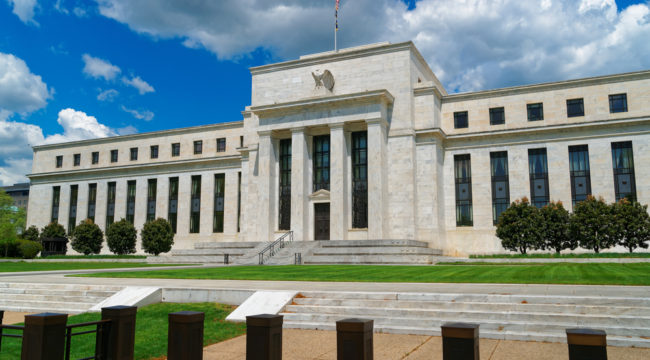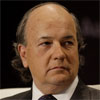Here’s What the Fed Won’t Tell You
Yesterday, the Fed released the minutes from its January Federal Open Market Committee (FOMC) meeting.
The minutes revealed that most members expect higher economic growth ahead, indicating that “further gradual policy firming would be appropriate.”
Stocks initially rallied when the report was released, since it didn’t appear to raise fears of rapidly rising inflation. It seemed to indicate only a gradual path of rate hikes. The Dow surged 300 points after the report came out.
But the bond market took the report with more urgency. The bond market indicated the Fed might be more aggressive, possibly raising rates as many as four times this year. Yields on the 10-year Treasury spiked to 2.95% — a four-year high.
Stocks began to slide once the bond market reacted. And after its initial rally, the Dow ended the day down 166 points.
Will the stock market volatility we’ve seen lately induce the Fed to back off on the rate hikes?
No, not necessarily.
The Fed isn’t as concerned about the stock market as many people think. Ben Bernanke once told me that the stock market would have to fall 15% before the Fed intervened. I think that’s a good rule of thumb. There are some caveats that apply, but I think a 15% drop is a realistic figure.
So the 11% correction we saw earlier this month, despite all the panic it caused, wasn’t enough to affect the Fed’s longer-term plans.
Here’s what you need to know:
The Fed isn’t raising rates because the economy is strong or they’re trying to get out ahead of inflation. GDP growth for all of 2017 was just 2.3%, only slightly better than the 2.13% cumulative growth since 2009. And worse than the 2.9% growth rate in 2015 and the 2.6% rate in 2014.
And inflation overall is still weak.
No, the real reason the Fed is raising rates is because it’s desperate to get interest rates up to around 3–3.5%. That will allow it to prepare for the next recession.
The last recession ended in June 2009. It’s almost nine years since the last recession. This has been one of the longest economic expansions in U.S. history. It’s also been a very weak expansion. Growth is running about 2.1% versus 3–3.5% historically.
That means we’re going to have a recession sooner than later. I’m not saying we are, but we could be in one already. We usually don’t know we’re in a recession until about six months into it.
Historically speaking, it takes 300 or 400 basis points of rate cuts to lift the economy out of recession. That means interest rates would have to be between 3% and 4% to effectively address it. Right now rates are 1.5%.
How do you cut rates 3.5% when they’re only at 1.5%?
The answer is you can’t. You run out of runway fairly quickly. That’s why the Fed is so eager to raise rates to about 3.5% and will use almost any excuse to do so. An 11% stock market correction isn’t enough to dissuade it.
Of course, right now the Fed is undertaking quantitative tightening, the opposite of quantitative easing. The Fed is destroying money. It’s like the Fed is throwing money into a furnace and burning it. By the end of 2018 alone, the Fed is projected to destroy about $600 billion.
So on top of the rate hikes, the Fed is destroying money. We’re getting a double dose of monetary tightening.
And let me be clear: This has never happened before. This is completely unprecedented.
This double tightening isn’t something the market has fully absorbed yet, although what happened in early February was an early warning sign. If all that money inflated the stock market, it’s only logical that taking it away will deflate the stock market. You can’t have it both ways.
Only time will tell if the Fed can successfully manage the wind-down. But given the extent of the past decade’s unprecedented monetary policies and the size of today’s asset bubbles, it won’t likely be pretty.
And ironically, the Fed’s tightening could produce the very recession it’s trying to avoid.
Regards,
Jim Rickards
for The Daily Reckoning



Comments: